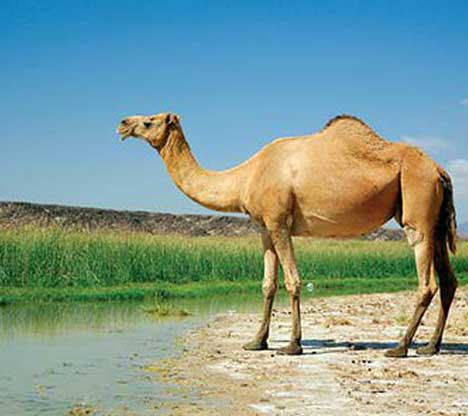Dromedary Camel

Like horses, the majority of Dromedary Camels have been domesticated for their many uses. They thrive in arid climates, and are found in the Arabian Peninsula and other parts of the Middle East, the Sahara Desert, and parts of India. A wild population has also been introduced to Australia.
Dromedary camels are opportunistic herbivores that will eat virtually any vegetation that can be found in the desert. This wide range of food allows them to eat plants that other animals will not eat, including thorny plants.
Dromedary Camels range from about 1000 pounds to 1500 pounds, making them approximately the same size as large horses. They measure 6 – 6.5 feet at shoulder height, and can approach 10 feet in height at its hump. One of the most notable features of the Dromedary Camel is its single hump. Its close relative, the Bactrian Camel, has two humps. The hump is used to store fatty tissue, which the camel uses as a food and water source when food and water are not available.
The neck of a camel is long and curved. The eyelids of a camel are heavily lashed to help protect its eyes from blowing sand in the desert. Camels have thick lips to aid them in eating thorny plants. Camels have large bodies and woolly coats. The hair of the Dromedary Camel is generally shorter than that of Bactrian Camels.
